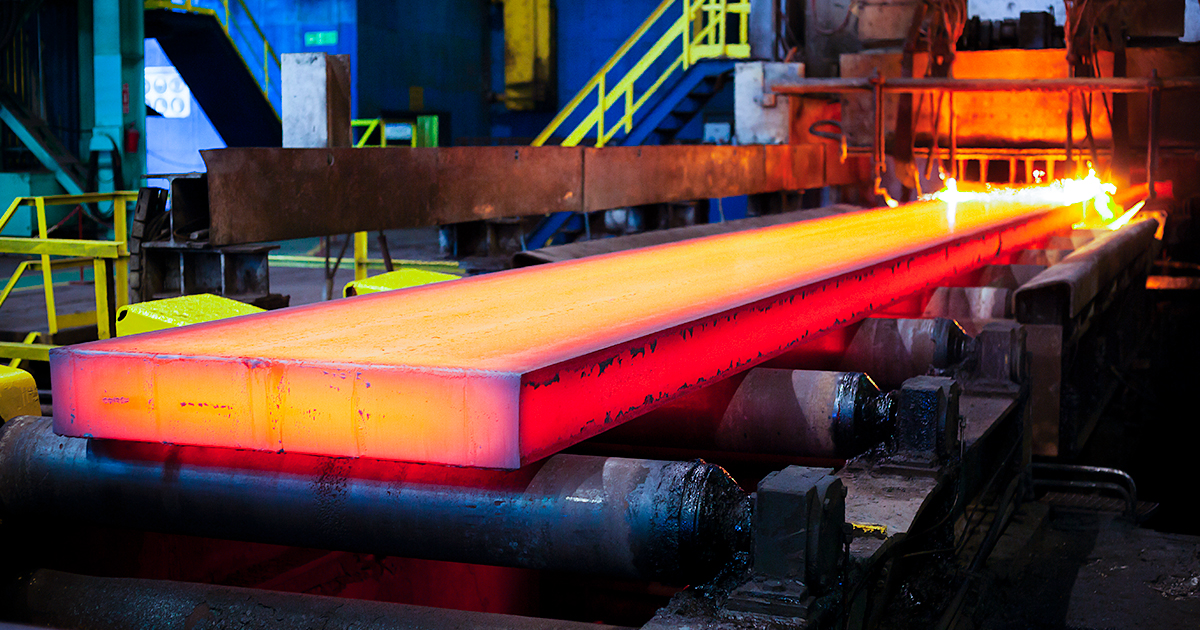
Least processed products: how steelmakers earn on semi-finished products
There is an opinion that the most profitable business is the one that produces the most processed products (ideally, finished products). It is a priori believed to be more profitable and more competitive than production of less processed products. However, theory and practice often differ, as evidenced, in particular, by current prices for steel products.
What’s the difference?
Ukraine’s export price for a slab, one of semi-finished steel products, is around $500 per ton FOB. The next phase of processing — hot-rolled coil — costs $518 per ton, only $18 up from the slab price. The third phase — cold-rolled coil — costs $570 per ton.
The same holds for the long products segment. The price for billets and semi-finished products is $450 per ton, rebar — $485, and wire rods — $500. In other words, a price increment is just $25.
Semi-finished products turned out to be not much cheaper than finished products, while the price margin of more finished products is, respectively, not much higher. This is due to the fact that the demand for steel products in the major markets is rather limited, while raw materials are quite expensive. Hence, semi-finished products perhaps include a higher added value than finished products.
In this context, Ukrainian steelmaking companies would not receive high margin for highly-processed products. It is financial performance, not the level of processing, that is the most important criterion of a successful business.
When it comes to Ukraine’s mining & metals sector, the share of semi-finished steel products in the total volume of exports was about 42% in 2018. If we deduct the volume of steel products shipped to Ukrainian steel rolling plants within the vertical chains (e.g., Ilyich Iron and Steel Works of Mariupol and Azovstal of the Metinvest Group) and take into account only net exports of semi-finished products to third parties, the above figure will be much lower, around 20%, which is thin on the ground.
Why do Ukrainian steelmakers manufacture semi-finished products?
Competitive advantages
Ukraine enjoys certain advantages, including raw materials, logistics and cheap labor. European countries cannot compete with Ukraine in the semi-finished products segment. What is more, there is an opinion that the EU manufacturers cannot possibly show presence in the segment of low added value products, because they do not stand competition with such countries as China or Ukraine.
Undeveloped domestic market
Domestic markets are the main consumers of finished steel products worldwide. Unfortunately, the domestic market is extremely underdeveloped in Ukraine: only 20% of products of the Ukrainian mining & metals sector are supplied to the domestic market, while the remaining 80% are exported. In export markets, Ukraine suffers from the effects of protectionism. Ukrainian products are not welcomed abroad. To date, 30 anti-dumping measures have been applied against Ukrainian steel products.
Lack of cheap money
Ukrainian companies lack investment resources. They develop only at their own expense. Therefore, any sales opportunity means an increase in investment. If there is a chance to sell semi-finished products, it should be seized.
Investment risks
Even given this difficult investment situation, Ukrainian steel companies keep investing in development. All investment projects, however, deal with low-processed products, i.e. blast-furnace and steel production. These projects are geared toward enhancing efficiency, cutting costs, and increasing sustainability of businesses amid a slump in prices. It is very risky and not always justified to invest money in highly-processed products in the absence of the domestic market and count for exports alone, as markets may close at any time.
And even where the domestic market is broad, it is not always possible to successfully compete with foreign manufacturers. Specifically, the volume of the Ukrainian market of painted sheets totals around 200–250 thousand tons. At the same time, Ukrainian companies manufacture only 10% of this volume, while Chinese imports meet the remaining demand. It seems beneficial to invest in the manufacture of painted sheets and put competitive pressure on China, but since Ukrainian consumers want to buy cheap products, Ukraine has no chance to compete with China in prices.
To make Ukrainian products price-competitive in the context of Chinese imports, it is necessary to make the competition more efficient, e.g. impose safeguard measures or tougher quality requirements.
Quotas for finished products exports
The EU market is one of key importers of Ukrainian steel products. Since recently, transactions in the EU market have been limited by import duties and quotas. By the way, quotas were imposed based on 2015–2017 export volumes. Much has changed since then in Ukraine, in particular the country lost its plants located in the non-government controlled areas. Specifically, despite Ukraine’s large quota for rebar and wire rod, the country does not cover it after the loss of Yenakieve Iron and Steel Works.
U.S. tariffs
The issue of pig iron exports deserves attention. In 2018, Ukraine exported some 3 million tons of pig iron, 30% up from 2017. The growth in pig iron exports was solely due to the U.S. import duties.
Pig iron is the only metal product, to which no import duty applies. Amid import restrictions, the domestic steel production boosted in the U.S., which encouraged the demand for raw materials, including pig iron. This allowed Ukraine to build up exports.
Hence, it turns out that exports of semi-finished products do not mean that the sector is economically backward. It’s all about economic efficiency and risks, as well as the absence of the domestic market.






